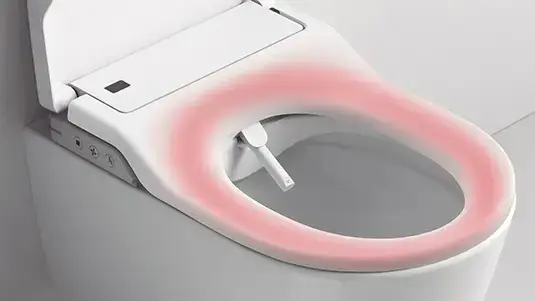Toilet and Bidet Backflow Prevention Tips
Backflow prevention is essential for maintaining the integrity of your clean drinking water supply. Whether you're a home or business owner, implementing effective backflow prevention guarantees your protection, the protection of public health, regulatory compliance, water purity, and the prevention of cross-contamination. Backflow protection is required for various applications including traditional toilets, Smart toilets that often have additional water connections such as bidet functions and handheld bidets that are typically considered "high hazard" due to the potential for contamination.
Signs Your Backflow is Not Working Properly
Backflow happens typically when there are pressure changes in the water system. There are a few telltale signs that your backflow is not working properly and needs to be addressed. Look out for:
- Reduced Pressure - A drop in water pressure may be a sign your backflow device is not working correctly.
- Visible Leaks - Water pooling around a backflow prevention device could indicate backflow malfunction.
- Discoloured or Smelly Water - Changes in water quality may suggest contamination and require urgent backflow testing.
Types of Backflow Prevention Devices?
Backflow prevention devices are designed for various properties, applications, hazard ratings and local plumbing codes. It's important they are installed correctly to effectively block contaminants from entering the potable water supply. Australia mandates that properties with high backflow risk install test backflow prevention devices and conduct regular testing to meet safety standards.
There are various backflow prevention devices on the market and the appropriate device must be installed according to contamination risk.
- Reduced Pressure Zone (RPZ) Valves - Designed for high-risk areas, RPZ valves provide double protection, allowing contaminated water to escape if a fault occurs.
- Double-Check Valves - Often used in lower-risk settings, these devices prevent backflow through a dual-check mechanism.
- Atmospheric Vacuum Breakers (AVBs) - Typically used in irrigation systems, AVBs block contaminated water from returning to the water supply.
Professional BackflowTesting
To ensure your backflow is working effectively, have a plumber conduct backflow testing. They have the skills and tools to ensure your backflow is safe and compliant. Testing is conducted using specialised test kits that check the pressure of the device to ensure its working correctly and preventing contaminants from entering the water supply. The main aim is to ensure the device maintains sufficient pressure to prevent backflow. If any issues are identified, recommendations for necessary repairs will be discussed.
For expert advice on backflow prevention contact the plumbing experts for peace of mind
Resource: Backflow Prevention Requirements - General Guidance of Requirements
